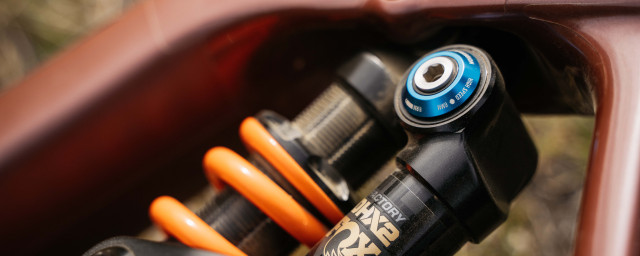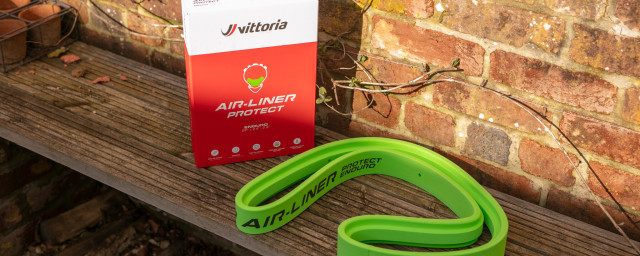The Cotic FlareMAX G4 is a down-country bike that refuses to be pigeonholed. Thanks to a respectfully lengthy geometry, huge range of custom options and wide fork travel optimisation, it's a versatile bike for many different riders, and it's tough not to like.
- Best mountain bikes for under £3,000 - capable trail bikes that won't break the bank
- Merida Ninety-Six 8000 review
- 15 Great British bike brands made right here in the UK
We've got the Cotic FlareMAX G4 in its Gold XT build for testing. As part of Cotic's business model, each build is pretty customizable, though you'll see, this build is what you get if you tick the "SID", "HUNT", and "Wolfpack" boxes upon checkout. The configuration options when buying a FlareMAX, or any Cotic bike for that matter, are vast, so vast that I won't delve into them. Still, you can pick anything from the headset to the wheels to match your particular tastes.
Our FlareMAX is a UK-made frame built using Reynolds 853 Ovalform steel and DZB tubed front end, mated to a 6066-T6 alloy rear with Boost 148x12 spacing to add a hint of stiffness.
While we're on the subject of the frame, it's shaped with Cotic's known Longshot geometry. It's designed to keep the bike nice and stable through chunky sections and steep tech. That means the FlareMAX is sorted with a mighty lengthy reach, comes with a wisely picked head angle, and it's reasonably low.
That frame is mostly externally routed, although the dropper post's cable finds its way into the seat tube, just above the bottom bracket, keeping everything rather tidy. The rear mech's cable is then routed through the seatstay, too, in a bid to keep the bike nice and quiet.
It rocks a 44mm standard head tube designed with an external bottom cup and a zero-stack top cup to keep the stack height as low as possible. That's a small but extra handy thought, especially when you point the bike uphill.
Now, onto the spec. Delivering 120mm of suspension at the front is a RockShox SID Ultimate. The SID Ultimate is RockShox' high-end cross-country focused offering, and this model is graced with a 35mm chassis, the brand's Charger Race Day damper, a lockout and a rebound adjustment.
It's a solid, incredibly well-damped fork that can be pushed surprisingly hard. However, those looking to push particularly harder may want something a bit stiffer (that's easily sorted thanks to Cotic's configuration options). As with any great fork, it's supple off the top but plenty supportive enough as it moves through its travel. Its rebound adjuster is a little bit different, though. It's sat deep within the fork leg, requiring a special Allen key to adjust. Just don't forget you've left it in there.
That's paired with a Cane Creek DB IL Air shock, handling 125mm of suspension. Like the fork, it's very nicely damped, but it comes with a wide range of very useable adjustments. You will need an Allen key to fettle with those adjustments, though.
We've then got a Shimano XT 12-speed drivetrain with matching two-pot brakes. Those are slowing down a pair of HUNT Trail Wide 29" wheels wrapped with a Wolfpack Trail at the front, and a Cross at the rear, both in 2.4" widths.
Finishing everything up, this bike runs an X-Fusion Manic dropper, Cotic Calver bars and some lock-on grips. All of which weighs at 13.6kg, a touch weighty for a down-country bike, but it hides its weight very well.
Point the bike uphill, and it makes easy work of tough climbs thanks to its supportive rear end and super quick-rolling tyres.
It's well balanced too. The 75.4° actual seat angle and slightly stretched 447.5mm chainstay places weight at a comfortable position over the bike. So on most climbs, weight distribution isn't something you have to put a lot of thought into. On steeper climbs, however, the longer front triangle can make you feel a little stretched on the bike, requiring a reasonable shift forward in the saddle to combat front wheel lift. Generally, weight is placed central enough where this is rarely an issue.
While zippy and eager up the hills, I have found that the rear suspension has a tendency to bob. It's not the end of the world, though, because the smidge of bob comes as part of a reasonably welcome trade. The shock is super active at the beginning of its stroke, absorbing all manners of trail chatter and offering a Velcro-like grip on the climbs.
If you find that the pedal bob is a little excessive, one of the bonuses of kitting a Cane Creek CB IL Air is that its lockout switch is easily accessible, sitting neatly on top. A quick flip of the switch firms the rear end up nicely, allowing you to take advantage of a nice efficiency boost.
It would have been easy for Cotic to have gone wild and slackened the head angle to a crazy degree, but the brand has stayed conservative. For the behaviour of the bike up a hill, that's good news. The 66° head angle reigns things in a bit and adds pinpoint accurate steering when wrenching uphill. This is ideal for slow-speed cornering.
Usually, a long geometry would scream 'enduro bike', or one that's made to go downhill fast. While the latter is very true of the FlareMAX, its small travel numbers and spritely pedalling mean that it's a weapon through flowy, flatter sections.
The bit of bob that the rear end suffers from isn't such an issue when out of the saddle, smashing on the pedals. Instead, it becomes more supportive. The FlareMAX's now supportive rear end and low profile tyres combine to make the absolute most of every pedal stroke, accelerating with blissful ease. Then, those 29" hoops and sorted geometry combine to do wonders to keep the momentum going while offering very welcome composure.
While we're talking about the tyres, the Wolfpack rubber here is impressively grippy, especially in dry and hard conditions. Its low profile tread patterns will fool you into thinking that the tyres are fully skittish and unpredictable, but that's simply not the case. The grip is plentiful over hardpack and damp trails, and they'll surprise you with what you can get away with. However, in the loose stuff, they do get a little squirrely, but aboard such a capable bike, a well-monitored lapse of grip is usually great fun.
They are incredibly lightly cased, however. While they roll super quickly, it can be quite easy to get carried away. I've managed to pick up quite the puncture whilst accelerating (what!?) up a rocky climb. Sorry, Cotic.
Of course, this is a down-country bike, so it'll be a cardinal sin not to talk about the bike's ride downhill. To put it straight, once the bike is pointed downhill, that's where the party really starts.
This bike is built with a mega stretchy 490mm reach, but it's paired with that not-so-crazy 66° head tube angle. The combination, as I've mentioned before, results in a massively roomy cockpit. Still, the head angle isn't so slack that it's uncontrollably floppy over flat sections. But that long front triangle makes up for the head angle (not that it's bad by any means) and provides tonnes of support and composure if you throw the bike down something steep.
Although, the FlareMAX's lighter weight build on this test bike will keep you on your toes.
We've got those XT two-pot brakes and some fairly low profile tyres, so when things get particularly steep and quick, it takes a light, calculated touch rather than a bull in a china shop approach. The combination of those brakes and tyres require a little more forward-thinking as they're not as aggressive as those that you'll find on a more trail/enduro orientated machine. However, this is part of the FlareMAX's magic; it just adds to the already massive fun factor.
All of the good things we like about the suspension going uphill is translated perfectly once the bike gets pointed downhill. Still, the rear end's progression makes it feel like you've got much more travel to play with. If you do ever bottom the shock out, the Cane Creek DB IL Air shrugs it off as it were nothing, thanks to a super soft bottom-out bumper.
It's got the length enduro bike, so it's stable and confidence-inspiring enough to get you travelling at some ludicrous speeds. The bike is keen to remind you of its 125mm of travel, but that's no bad thing as the small travel adds heaps of liveliness that makes the bike super fun. It also makes you feel like a bit of a hero. This is where the bikes hooligan tendencies creep through.
The FlareMAX's progressive geometry lends itself very well to long, sweeping corners where that stable ride remains. Get into some tight and twisties. However, the bike's length becomes glaringly clear.
It takes a shift in mindset, though. You'll have to be more calculated in how you handle the tighter corners. Get finding those high lines, and you'll be perfectly happy.
All in all, it's simply a bike that loves to go fast as long as you're happy to cling on for the ride. It's long enough to keep you comfortable at some serious speed but the small travel and skinny tyres make for a wild ride that straddles a fine but exhilarating line between confidence-inspiring composure and ear-to-ear grinning mayhem.
Versatility is what the FlareMAX has really become all about. Of course, our test bike is set up to be more of a lightweight, cross-country ripper, and I'm certain that, while weightier than most XC bikes, it won't feel too out of place rolling up to a start line. But, as Cotic says, the bike will work swimmingly with up to a 140mm fork, turning the FlareMAX into a more capable, more composed all-mountain rig, and because its rear suspension is so well designed, it'll be perfectly happy navigating up chunky, natural trails or even tearing your face off at bike park speeds, especially If you bung on some fatter tyres.
Value & verdict
As for value, for a UK-made steel frame build, it's not too shabby. If you were to round the FlareMAX's price tag up to £4,700, you could get the Nukeproof Reactor 290 ST. That rocks top-end Fox Factory suspension, but it is built around a carbon frame and comes with more aggro tyres. The geometry isn't a stone's throw away either.
YT Industry's comparable IZZO Core 4 will set you back even more, at £5,000. Again, this bike gets a carbon frame but a similar kit list to the Reactor 290 ST. It receives a noticeably shorter reach, at 472mm, but a similar 66° head angle to our FlareMAX. So, needless to say, it's more expensive and more conservatively shaped than both the Reactor and FlareMAX.
But you absolutely shouldn't forget that the FlareMAX on test is built around a limited edition UK-made frame. You'll save £300 if you go for a Taiwanese frame, and of course, you can even customize the build here and there to make it cheaper if you would like to. You can bung on a burlier Cane Creek Helm fork for the same price and beef up the travel. For an extra tenner, you could kit the bike with chunkier WTB Verdict and Trail Boss tyres. This bike can almost literally become anything you want it to be, and there are a plethora of priced build options to help that.
For a bike running 125mm of travel, I've been incredibly impressed at what this bike is capable of. It's a monster on the climbs if you can forgive a bit of pedal bob, quick and easy-going through flowy mellow sections and massively confidence-inspiring when the speeds rack up, the gradient drops and the lines get chunky. If you're after a UK-made, steel full-susser that well and truly lives up to its do-it-all claims, you can't go wrong with the Cotic FlareMAX.

























4 comments
@JL77, I can honestly say that this bike does mould to the trail! I didn't think I would notice, it being your average trail rider, but moving from a Lapierre Zesty to the FlareMAX was incredible. You can feel that little bit of flex and feels good! All the stuff Cy is saying about sustainability is so important too. We need to look after this incrediblle world we are in charge of!
Hi. Thanks for the kind words, I'm glad you like the FlareMAX. There are many benefits to steel on a full suspension bike in our opinion. We use steel for performance. Steel is so strong and stiff as a base material compared to aluminium and carbon fibre that it allows us to design bikes with smaller tubes which do allow some flex into the frame. As unlikely as it might sound, you can steel get those steel feel benefits even on a full suspension bike. Our bikes can flex a little along their length, moulding to the terrain and breathing with the trail. They are fabulous on rooty, chattery terrain. I wrote a load about this a couple of years ago if you want to read more. (https://www.cotic.co.uk/news/2019/steelforperformance)
As you rightly point out, steel is incredibly strong and durable so it's great for longevity, and making durable bikes that last a long time is really important to us. Steel can be repaired and easily recycled. The super high strength Reynolds 853 steel we use for the front triangles is made from mostly recycled material, and steel has the lowest environmental impact of any common frame material. Lower than aluminium and much, much lower than carbon fibre, even before you throw in issues like recycling. So it's not just about performance, the lovely clean lines, or even strength, it's about trying to be better and making less of a mess of the planet too.
Cheers,
Cy @ Cotic
Hi. Thanks for the kind words. I'm glad you like it. The benefit of steel is ride feel, because it's so strong as stiff as a material we can use it in smaller sections than weaker materials like aluminium and carbon fibre to allow an element of flex along the length of the bike. It makes them breathe with the trail better and hold lines on things like cambered roots. 853 is also not just any steel. It's nearly 40% stronger than regular cromoly so it's super strong, but most importantly, it's long term durable too. It's incredibly important to us that our bikes last and can be easily repaired or recycled. Steel is brilliant for this. It's also the lowest impact material to build a bicycles frame from. We use steel for performance (I wrote a blog about that here if you're interested: https://www.cotic.co.uk/news/2019/steelforperformance), but also because it's not just about performance for us. It's about trying to have a low impact on our planet and build things that last instead of disposable.
Cheers,
Cy @ Cotic
Beautiful bike. As much as I love steel, I wonder what the benefit is of having a front triangle in steel on a FS, though. For more extreme FS bikes, having something more bulletproof may make some sense.